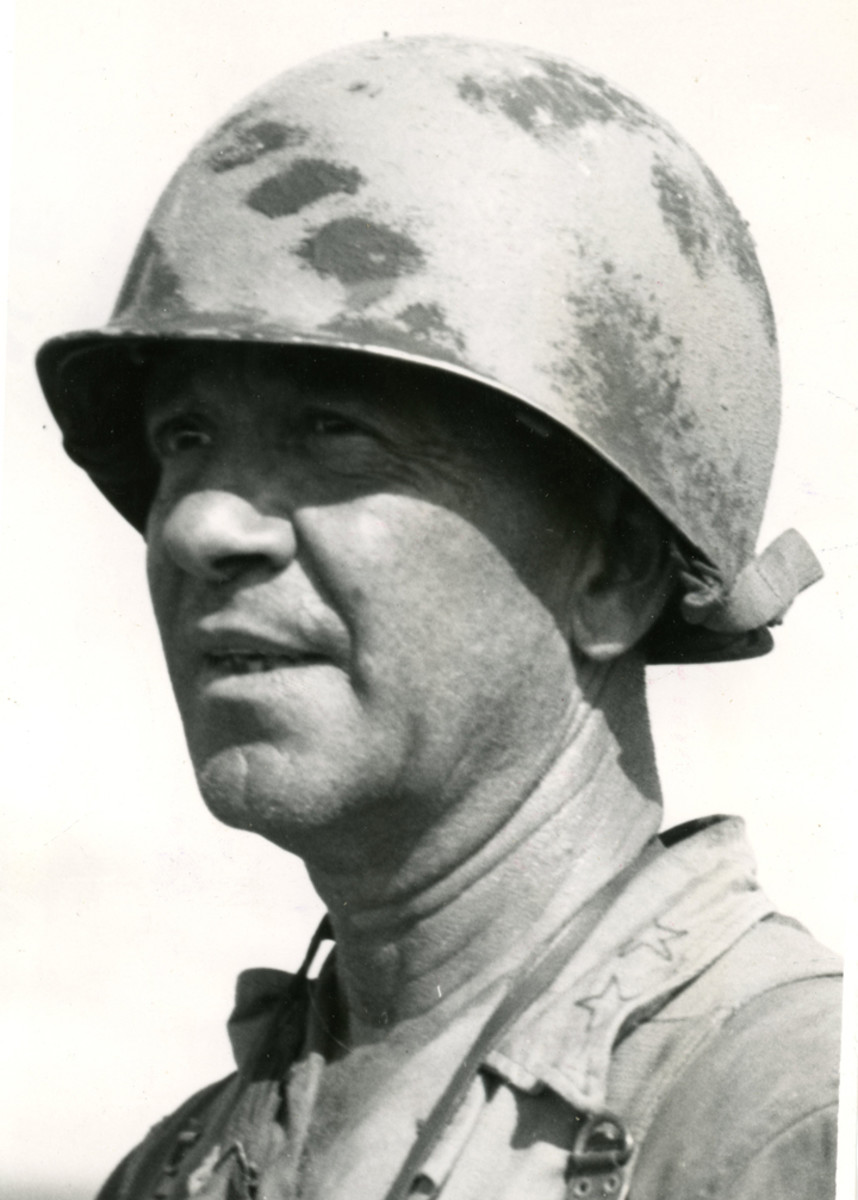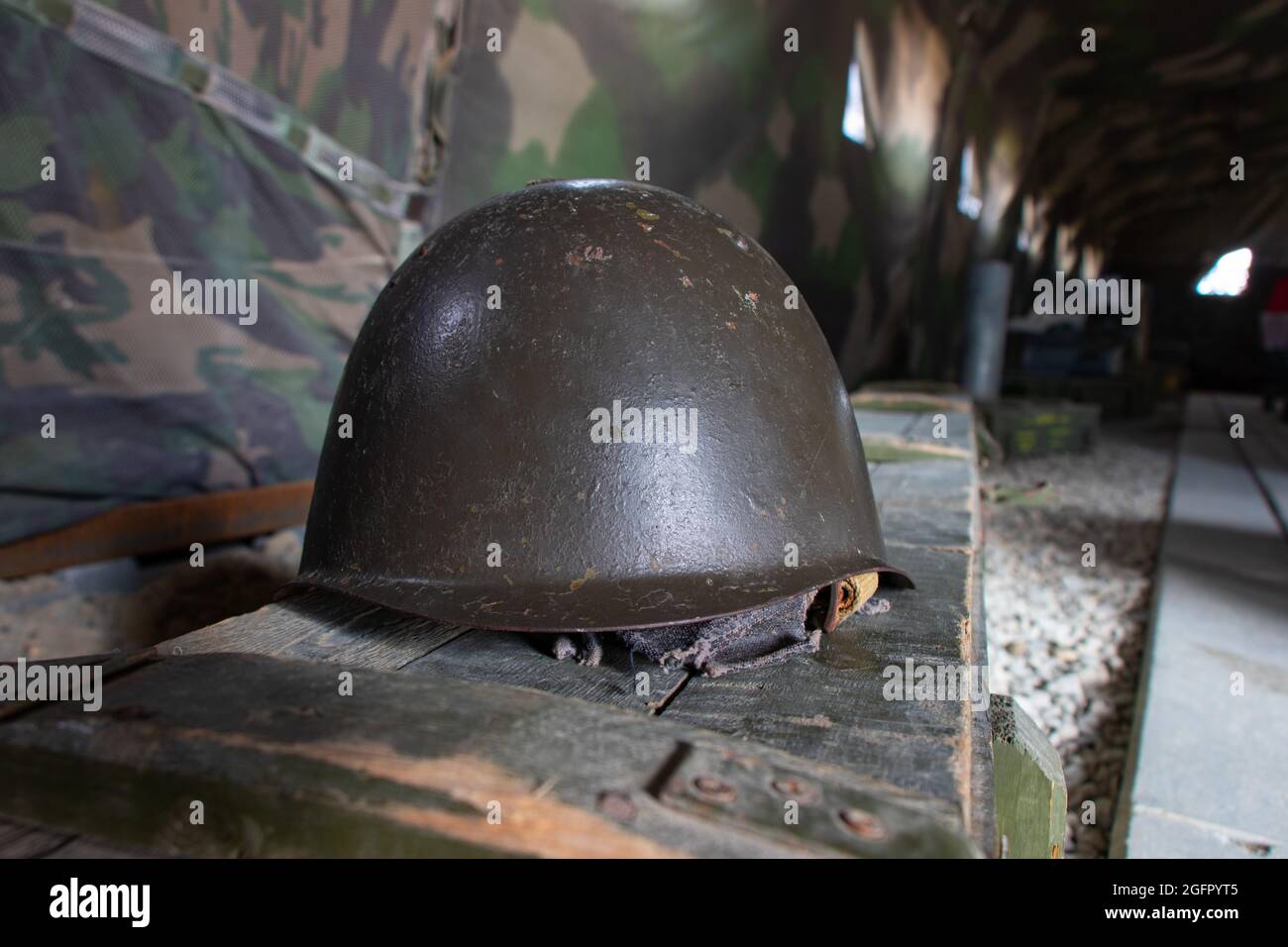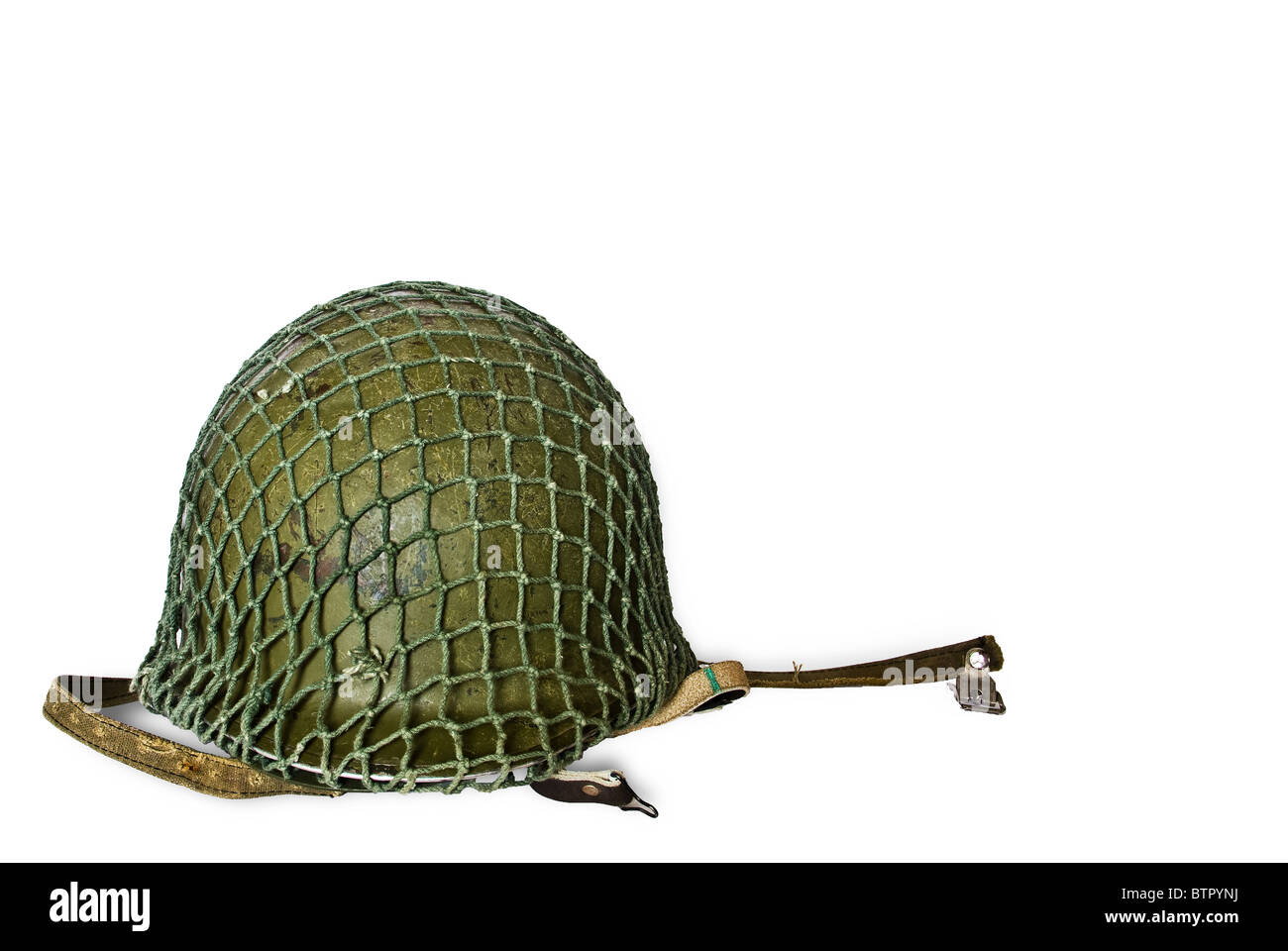Old Military Helmet - The facility itself is impressive. The Kevlar helmet is covered with light brown desert camouflage fabric, it has an olive drab neoprene strip on the lower rim of the helmet, with the soldier's name embroidered in black.
But this helmet also has four black stars on its front, above the visor and on the "name bar". The stars are there because that particular helmet belonged to General Norman Schwarzkopf Jr., the commanding American general in Operation Desert Storm, which began in January 1991.
Old Military Helmet
 Source: www.militarytrader.com
Source: www.militarytrader.com
Since the mid-20th century, helmets have often incorporated lightweight plastics and other synthetic materials, and their use has become highly specialized. Some notable recent developments include the French Spectra helmet, the American PASGT (commonly known as "Kevlar" by the US military), and the Advanced Combat Helmet, or ACH.
Required Cookies Technologies
A more complete list of helmet types can be found below. Today, Kevlar's use has transitioned into commercial products in everything from athletic shoes to conveyor belts for heavy rock mining; From athletic cross-training clothing to work gloves and firefighter outerwear, anti-puncture lines for car and bicycle tires, sails and spinnakers for leisure and racing sails – not to mention clothing for parachuting.
Light, tough and reliable, Kevlar has endless uses and is a prime example of how a material first developed and used in military applications has moved into countless other areas of American life and culture. All helmets attempt to protect the wearer's head by absorbing mechanical energy and preventing penetration.
Their structure and protective capacity changes during exposure to high energy. In addition to their ability to absorb energy, their volume and weight are also important considerations, as greater volume and weight increase the risk of injury to the user's head and neck.
In the late 20th century neurosurgeons invented anatomical helmets that fit the internal structure of the head. In the 19th century, more materials such as leather, felt and wicker were introduced. Helmets and leather pickets were important developments of the 19th century.
Personalised Advertising
However, the 20th century saw the greatest expansion in the variety of helmet shapes and designs, with the development of highly specialized helmets for many sporting and professional applications, as well as the advent of modern plastics.
 Source: c8.alamy.com
Source: c8.alamy.com
During World War I, the French military developed the Hadrian helmet, the British the Brodie helmet, and the Germans the Stellhelm. Flight helmets also evolved during the 20th century. Several sports helmets were also developed in the 20th century, including football helmets, batting helmets, cricket helmets, bicycle helmets, motorcycle helmets and racing helmets.
Some of the technologies we use are essential for important functions such as security and site integrity, account authentication, security and privacy preferences, internal site usage and technical data, and browsing and transactions necessary for the site to function properly.
A ceremonial or symbolic helmet (such as a UK policeman's helmet) is sometimes used without any protective function. The earliest known use of helmets was around 900 BC by Assyrian soldiers, who wore thick leather or bronze helmets to protect themselves from blunt objects and sword and arrow strikes in battle.
Personalised Advertising
Soldiers still wear helmets, which are now mostly made of lightweight plastic. To enable personalized advertising (such as interest-based advertising), we may share your data with our marketing and advertising partners using cookies and other technologies.
These partners may have their own information that they have collected about you. Disabling the Personalized Ads setting will not prevent you from seeing Etsy ads or affect Etsy's personalization technologies, but it may make the ads you see less relevant or more repetitive.
Yet despite the M1917's commitments, innovation remained slow. In 1936, a slightly more protective version known as the M1917A1 or "Kelly" helmet was issued. It had a more comfortable helmet and an improved canvas chinstrap. The goal of these changes was to improve the overall balance and performance of the helmet.
But it still doesn't provide the kind of protection against attack that the War Department wants. Sale price AU$87.65 Army and Outdoors - also known as Kiwi Disposal - has in fact been around for over 35 years.
 Source: c8.alamy.com
Source: c8.alamy.com
Required Cookies Technologies
From a small warehouse taking bulk orders to now managing two retail stores (Auckland and Christchurch) and a busy website serving New Zealand and the world. Then, in 1965, DuPont chemist Stephanie Kwolek invented Kevlar. "It was a game changer," Blazik says.
In the 1970s, several Army agencies, led by the Army's Natick Development Center at Watertown Arsenal in Massachusetts, began working to develop helmets using layers of tough, puncture-resistant Kevlar 29, a synthetic ballistic fiber, bonded to synthetic polymers.
Capable of stopping most resin bullets as well as shrapnel and projectile fragments, the skull protector weighed 3.1 (for the small model) and 4.2 pounds (for the extra large). Because of Kevlar's flexibility and plasticity in the design process, the Army and its agencies were able to create more efficient helmet designs, like the PASGT donated to the Smithsonian by General Schwarzkopf in 2007.
Its design is also approved. To cover the ears and the back of the skull up to the nape of the neck. Known as PASGT (Personal Armored System Ground Troops), the helmet was introduced to US ground forces in the years following the Vietnam conflict and was initially used in limited numbers in Grenada and Haiti in the 1980s.
It was widely used by US ground forces by the time of Operation Desert Storm in 1991, when US forces led a 34-nation coalition to liberate Kuwait following its occupation by Iraq in August 1990. In civilian life, helmets are used for recreational activities and sports (eg, horse racing jockeys, American football, ice hockey, cricket, baseball, and rock climbing);
hazardous work activities (eg construction, mining, special forces); and transportation (eg, motorcycle helmets and bicycle helmets). Since the 1990s, most helmets have been made of resin or plastic, which can be reinforced with fibers such as aramid.
The Smithsonian's Lamelson Center for the Study of Invention and Innovation will host Military Invention Day on May 20, 2017, from 10 a.m. to 5:30 p.m. at the Smithsonian's National Museum of American History on the National Mall.
 Source: i.pinimg.com
Source: i.pinimg.com
This type of data sharing may be considered a "sale" of information under California's privacy laws. Opting out of personalized ads will remove you from these "sales". Learn more in our Privacy Policy, Help Center and Cookies and Similar Technologies Policy.
Sale Price AU$163.90 AU$163.90 In the 19th and 20th centuries, leather helmets saw use in military applications, particularly aviation and tanker crews in the early 20th century. In the early days of the automobile, some drivers also adopted this style of headgear, and even early football helmets were made of leather.
In World War II, American, Soviet, German, Italian, and French flight crews wore leather helmets, with German pilots wearing them under their berets before disposing of both and switching to cloth caps. [When?] First and Second World Eras.
The wars also saw a resurgence of metal military helmets, notably the Brodie helmet and Stelhelm. To enable personalized advertising (such as interest-based advertising), we may share your data with our marketing and advertising partners using cookies and other technologies.
These partners may have their own information that they have collected about you. Disabling the Personalized Ads setting will not prevent you from seeing Etsy ads or affect Etsy's personalization technologies, but it may make the ads you see less relevant or more repetitive.
Some helmets have other protective elements attached, such as face goggles or goggles or face cages, or ear cages or ear plugs and other types of protective headgear and communication systems. Sports helmets may have an integrated metal face shield (face cage).
That year, as another evolution in advanced industrial design added the flexibility of layered Kevlar fibers, the Army released the Advanced Combat Helmet (or ACH). Now made from advanced Kevlar 129 and the chemically identical Tavaron brand of ballistic fiber, the ACH is a masterpiece of modern military design.
 Source: previews.123rf.com
Source: previews.123rf.com
Lighter – at 2.4 pounds – and with a narrower silhouette, it better covers the ears as well as the back of the neck and provides stronger protection against ballistics, bullets and shrapnel. It also has a more sophisticated shock-absorbing liner that better protects against traumatic brain injuries, especially from roadside bombs and improvised explosive devices.
Sale Price AU$96.04 AU$96.04 Sale Price AU$209.21 AU$209.21 Keep your collections to yourself or inspire other buyers! Note that public collections can be viewed by anyone - they can also appear in recommendations and other places.
View Etsy's privacy policy In fact, the flip-up metal dish, which weighs about 1.3 pounds, has a main liner that won't stick to the soldier's scalp with the helmet's manganese steel alloy shell, plus a solid chin strap that holds it in place.
It was a primitive weapon. As a defensive device, according to Blazik, it did nothing more than throw exploding stones at the heads of the soldiers while they were in the French trenches. "However, it can also protect against debris, which was also a major concern in this war," adds Blazic.
Additionally, the ACH has a front opening that can accommodate either goggles or goggles that block sandstorms in desert combat or heavy rain and wind. Due to its lightness, protective properties and flexibility of various configurations, it was immediately adopted by the soldiers.
Add to that an optional black steel clip above the front cowl that could be used to attach devices from night vision goggles to camcorders, and the Army had an advanced security tool. Blazik says the liner uses a network of interlocking adjustable mesh that can be tightened or loosened like today's hard hats, allowing the helmet to more precisely conform to the individual characteristics of each soldier's skull.
"It was a huge development." The word helmet is shortened from helm, a medieval word for protective headgear for combat. A large medieval helmet covers the entire head and is often accompanied by a crest to protect the throat and neck.

Originally, a helmet was a helm that only partially covered the head. © 2023 Smithsonian Magazine Privacy Statement Cookies Policy Terms of Use Advertising Notice Your Privacy Rights Cookie Settings Sale Price AU$ 242,28 AU$ 242,28 Sale Price AU$ 195,50 AU$ 195,50 Helmets used for different purposes have different designs.
For example, a bicycle helmet should protect the wearer from the blunt impact of road bumps. A rock climbing helmet should protect against strong impacts and objects such as small rocks and climbing equipment falling from above.
Practical concerns also dictate helmet design: bicycle helmets must be aerodynamically shaped and well ventilated, while rock climbing helmets must be light and small so as not to interfere with climbing. A common practice was the display of the helmet as part of the coat of arms, above the shield, a practice that persisted long after the helmet itself fell into disuse.
In German heraldry the helmet was even considered inseparable from the shield, in contrast to English heraldry, where the practice of showing the helmet and crest alone without any shield came into vogue in Victorian times.
In most post-medieval heraldic traditions, the style, color and position of the helmet became a symbol of the bearer's rank. The rank was also often denoted by a crown, usually placed on a shield or helmet.
Although some American soldiers called it the "K Pot", referring to its Kevlar outer material, others called it the "Fritz" due to its resemblance to the "Stahlhelm" helmet worn by German soldiers in both world wars.
. But despite the pejorative nickname, the protective properties of the PASGT, due to its Kevlar exterior, proved a vast defensive improvement over the M1. მიუხედავად იმისა, რომ ჯერ კიდევ არ არის სრულყოფილი ახლო მანძილიდან ტყვიების და ნამსხვრევების და ჭურვების ფრაგმენტების შესაჩერებლად, ჩაფხუტის უსაფრთხოების უზრუნველყოფა აღიარებულ იქნა, როგორც კვანტური დამცავი ნახტომი წინ.
old war helmets for sale, old army helmets for sale, antique military helmets for sale, vintage military helmets for sale, old military helmets for sale, vintage military helmets, vintage army helmet, ww2 military helmets for sale